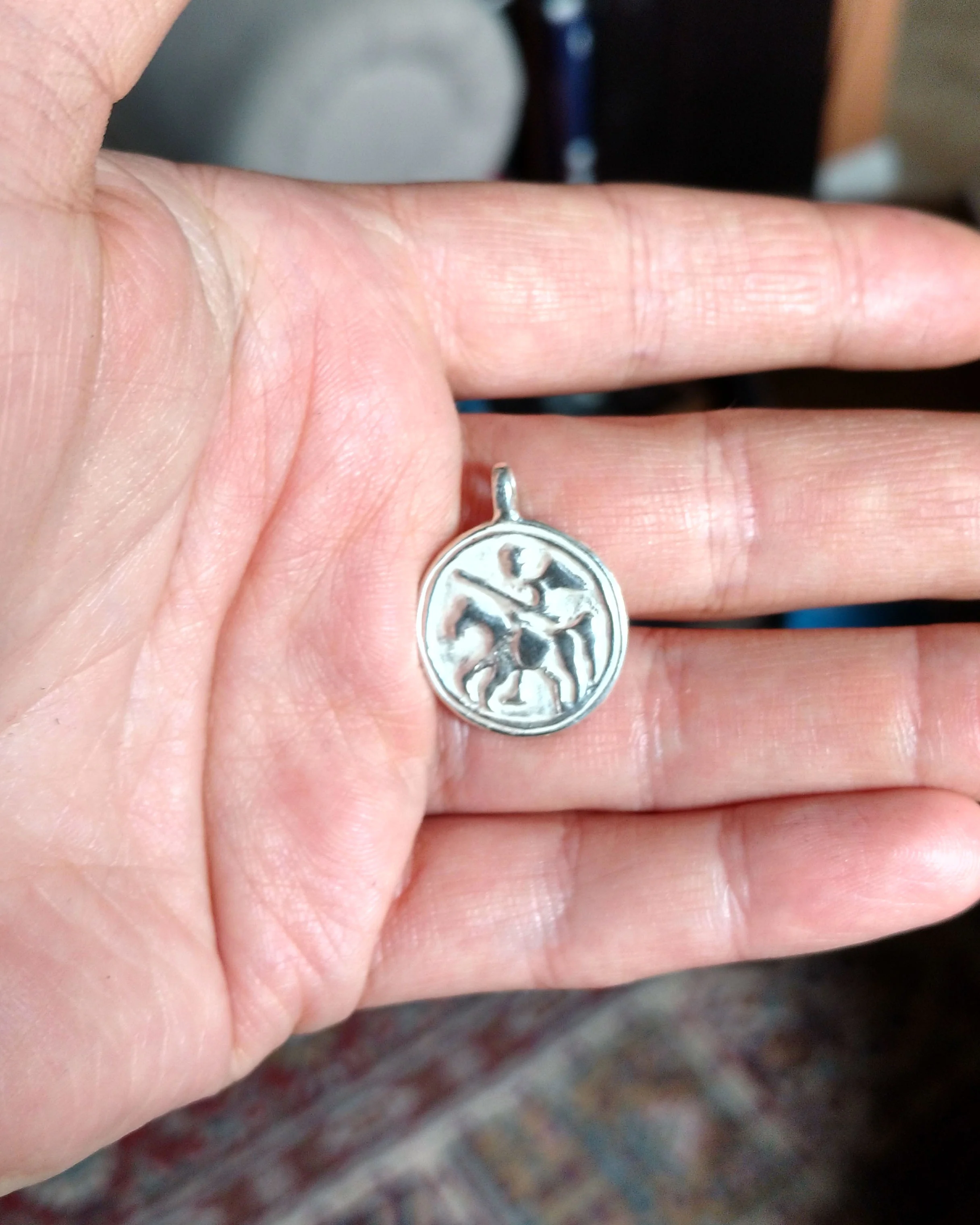Reproducing an original artifact
Aurora Simmons
There is a wonderful online auction, called Timeline Auctions, where small historical artifacts are sold. A friend of mine, recently purchased this gorgeous medieval medallion, representing Saint Michael. We aren't sure of the exact dates, it was originally listed as 7th-8th century, but it may be later. It is from Byzantine Greece.
It is always very exciting to get to handle originals. Saint Michael was a common motif in the early Medieval period. He was the leader of the army of God, so he became the patron of warriors. But he was also known as a healing angel.
There are two options when reproducing originals. Generally, I work from images because it's rare to be able to get my hands on an extant artifact. I do my best to accurately represent the proportion and shape of the original based on the image. In this case, however, I had the option to simply pour a silicon mold around the token to make a perfect reproduction, or to hand-carve a new one in wax. There are a couple of things about the original that make it tricky to perfectly reproduce. It has some damage around the edges, and it is very, very thin, so I would have had to build up the back somewhat to create a reproduction that was viable for casting. I certainly could have done so, and one could argue that this would create a better replica.
I decided to go a different way. I really enjoy the process of carving wax, I also love testing myself by attempting to copy existing pieces. It takes extreme care and discipline to reproduce, rather than letting yourself create something from your own mind. (Of course I love to do that as well) And I had never before had the opportunity to create a reproduction when the original was actually available for me to handle.
I find that when I reproduce something I develop a relationship with the piece that I wouldn't normally have, a kind of aesthetic intimacy. You get a much deeper sense of design elements formed by the original creator when you have to spend a long time looking at them and understanding their relationship. On a more intangible level, I feel like I can almost reach back in time to share a small piece of the original crafter's experience of making the piece, which I find deeply enriching.
It took me around two hours to carve the medallion, and despite much technological wrangling, (phones, videos, memory space, video-editing, youtube, website platforms etc. which I trust the original creator did not have to negotiate) I did take some video footage of the process. I have edited this footage (at great length, and with much swearing) into the video you see below.
My wax carving tools are super low tech. I use a sharpened needle-file, gravers, and steel-wool and a toothbrush for cleanup. All technology that was readily available to jewelers of the past. ( ok maybe it wouldn't have been a tooth brush per se,) Sometimes they used wax for their models, but they also used wood and sometimes clay or stone for their originals. The wax I use is a modern mix with very good hardness and a very high melting temperature.
It was a very enjoyable process and I have to say I am quite satisfied with the result, though my finished product did end up a little smaller than the original. I hope you will find the video interesting and that it will give you bit of insight into the laborous process of carving wax. I have a number of additional original medieval buckles and belt fittings. I plan to make my next blog about them, so stay tuned.
If you like this medallion, and would like to own one yourself, you can purchase one, in sterling silver. Just scroll down.



